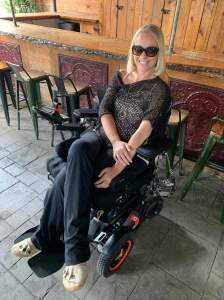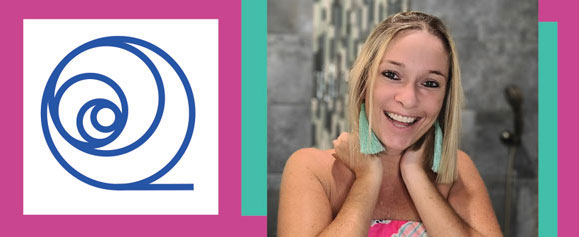
Writing is a therapeutic activity for me as it helps calm my mind, reduces my pain levels, and allows me to try and help others from afar. Over the last two weeks I repeatedly opened a new word document to write my next article only to find myself closing the program down after a few sentences. This process repeated over and over again, and I chalked it up to writers block.
The other day as I was sitting on my computer thinking more critically about why I could not put words on paper as I kept fidgeting in every direction in my wheelchair unable to find a comfortable position. I started to notice the pain in my neck has slowly been increasing over the last several weeks for no immediately obvious reason. I had not changed anything in my routine, my diet, my exercise program, etc., but the piercing feeling of knives running down the scar on the back of my neck from one of my surgeries continued to persist. This new pain has prevented me from maintaining my laser focus as I am usually accustomed to.
This prompted me to think about chronic pain more critically. I scrolled back through many of my articles over the last several years and realized I have never taken the time to describe what chronic pain means to me and likely for the millions who suffer from it too.
Pain stems from inflammation in the body because inflammation is part of the immune system’s response to danger. It’s a hugely complicated process to prepare our body to fight off hostile forces. There are two main types of pain in our body – Acute Pain and Chronic Pain.
Acute pain usually comes on suddenly and is caused by something specific. Acute pain does not last longer than six months and goes away when there’s no longer an underlying cause for the pain such as surgery, broken bones, dental work, burns or cuts, etc.
Chronic pain is ongoing and usually last longer than six months. This type of pain can continue even after the injury or illness that caused it has healed or gone away. Pain signals remain active in the nervous system for weeks, months, or years. Chronic pain can include headaches, nerve pain, cancer, arthritis, fibromyalgia, etc.
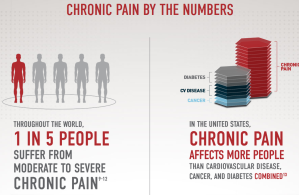
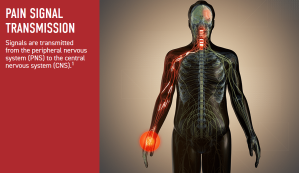
A majority of folks who sustain a spinal cord injury suffer from extreme chronic pain in many forms after their accident. Before I broke my neck I would look at somebody in a wheelchair and wonder what they felt? … I thought they couldn’t feel their legs or their stomach, etc. I was epically wrong!
Many of us suffer from something called Neuropathic Pain. Essentially, it is nerve pain that manifests itself in different ways throughout the body 24/7. It’s almost like a cruel joke to be paralyzed and feel pain from the inside out. Regardless, this pain can result in feelings of pins and needles, burning fire, and glass cutting you from the inside out. It is different for every person.
Chronic pain usually does not resolve itself on its own and can affect our daily lives with respect to productivity, quality of life, focus, and so much more. I find being paralyzed quite easy at this point in my SCI career, but you never quite get used to the chronic pain.
As for me, I suffer from 4 serious chronic pains at the same time. On any given day I am psychologically equipped to handle 2-3 of these pains at the same time when they reach critical levels, but when I have all 4 pains at the same time I’m generally out for the count for the rest of the day.
These pains include:
- Neuropathic Pain – from the chest down and in my arms – feels like burning pins and needles day and night. I usually wake up with a 7/10 pain level in the morning and it proceeds to increase to 9/10 at nighttime on a regular basis.
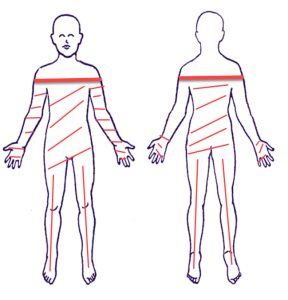
- Hypersensitivity – on my hands and forearms – feels like little shards of glass cutting me at all times. I have internal neuropathic pain on my hands, but also suffer from peripheral nerve damage on my hands called allodynia. What this means is I have partial feeling on my hands, which may sound great, but just the slightest touch of my hands combined with the nerve pain inside creates hypersensitivity on my skin, which gets activated to create an excruciating feeling.

I combat this by wearing these little winter stretchy gloves of my hands to produce a compression type therapy. Many folks who have hypersensitivity from scars or burns find that wearing tight restrictive clothing such as compression arm sleeves, tight shirts, etc. helps to reduce the external stimuli on the skin.
- Neck Pain – as a result of multiple surgeries I have scar tissue and nerve damage that prevents me from sitting up in my chair too long, and feels like someone is slowly cutting me with a butter knife on the back of my neck. After my second spinal surgery on the ventral (backside) of my neck I was left with further nerve damage from C5 to C7. This results in an electrifying type feeling that goes down my neck over my right shoulder, and down my right arm.
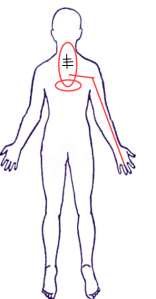
- Shoulder Pain – over the years I have developed an overuse injury resulting in a combination of nerve damage, musculoskeletal damage, myofascial pain, and soft tissue damage on the right side of my shoulder under the scapular area. It feels like someone is twisting a potato peeler back-and-forth under my shoulder blade every day.

Solutions to Chronic Pain
After spending some time thinking about what I wrote above and all the different type of pains I endure on a daily basis I must admit I also wondered how I make it through each day sometimes.
Sadly, there is no miracle medication to “cure” chronic pain because we can’t actually see chronic pain. If we cannot see chronic pain and define it specifically how are scientists supposed to come up with a viable therapy?
Chronic pain is a signal from the brain and the brain is caught in a “Groundhog Day” type loop. The brain just keeps replaying the same pain feelings over and over and over again.
There are, fortunately, a multitude of different therapies you can try to lessen the pain in order to live your life. These are not magic bullet solutions, but after speaking with countless fellow spinal cord injury folks and others who suffer from other types of chronic pain; a combination of some of these therapies usually help lessen the worst of the symptoms.
- Acupuncture
- Massage
- Marijuana
- Meditation
- CBD oil & CBD products
- Hypnosis
- Physical therapy
- Sex
- Distraction
- Cold laser therapy
- Stretching
- Compression therapy
- Exercise
I’m sure there are countless more out there, but these are a few employed by many. I am a personal believer in meditation, sex, massage, physical therapy, acupuncture, distraction, and exercise. I would be interested in trying marijuana with a very low THC and high CBD ratio, but it’s still not legal in my state. So, I’ll have to wait on that one. I have recently started taking a high grade CBD oil sublingually and CBD cream topically for the back my neck. The jury is still out, but I’m hopeful.
There are also those who turn to opioids. The challenge with opioids is that they do not work on the same pain receptors as chronic pain. Opioids naturally help lessen the pain in the acute phase of an injury, but over time they just dull the senses, become addictive, and usually end up ruining many people’s lives because they just don’t pack as much punch as they did in the beginning. However, many people hold onto the hope that they will work all the while becoming highly addicted.
The opioid epidemic in this country has gotten out of control because chronic pain is ruining so many people’s lives. To live with chronic pain day in and day out can take a massive toll on one’s mental health. It can be hard to get out of bed (I can personally attest to this), find joy in the simplest of things, and simply find anything positive to be happy about.
The thing about chronic pain is that it is in the brain and that means that we do have an element of control over how we frame our perspective on life. If we truly believe pain is going to envelop your entire being or ruin every day, then it probably will.
If we know we have to live with this little monster inside of us and we don’t have an immediate solution to kick her out of our brain, then we can change our internal conversation about the relationship we have with pain.
The Little Lady Within
Okay, now this may sound silly, but I’ve actually created an alternate identity for my chronic nerve pain, which engulfs nearly 80% of my body. I haven’t actually given her a name yet, but I am certainly open to suggestions 🙂
Several years back the pain was so intense after multiple surgeries living in China that I could barely make a sentence. I could not focus. I worked with a hypnotherapist who helped me detach myself from my body in our sessions. In my mind I would be laying on the beach soaking up the rays on the sand and my pain would be floating above me like a separate entity.
Over time, and I’m still not brilliant at it, I came to love the idea of having two separate identities. There is me and there’s my pain. When she starts to throw a tantrum and turn up the volume of pain in my body, I graciously give her the day. I literally stop what I’m doing, get in bed, put a heating pad on, and watch a movie. I spent years fighting her and the more I fought her – the more she won.
She currently seems content with our custody arrangement. On a daily basis she usually allows me 8 hours during the day to get on with what I need to accomplish and around 4 PM every day she knocks on my door to take my body back. On the weekends she even gives me more hours to go play at night if I feed her a vodka or two 😉

My life is generally structured around pain. I know that sounds sad, but we all have to make compromises in life for an assortment of reasons, and this is just one I have to make. I wake up at 5:30 AM each morning, promptly get to work or exercise or doctors’ appointments, and then at around 3 PM or 4 PM I head to bed for electrical stimulation, stretching or shower. I’m usually done with my day around 6 PM and this is the time where she really gets to shine. She gets to lounge around with my body while I check out for the day.
We all have our different coping techniques for chronic pain and these are some of mine. I don’t wish chronic pain on my worst enemy, but if you do live with it, you are not alone by a long shot. It is manageable, but it takes work, determination, intention, and sometimes sheer grit.
Throughout human history people have endured the harshest of conditions and are still here. We are more resilient as a species than you may give yourself as an individual. I find it breathtaking and comforting when I read history books of how so many people from all walks of life were able to continue to push through the harshest of circumstances.
